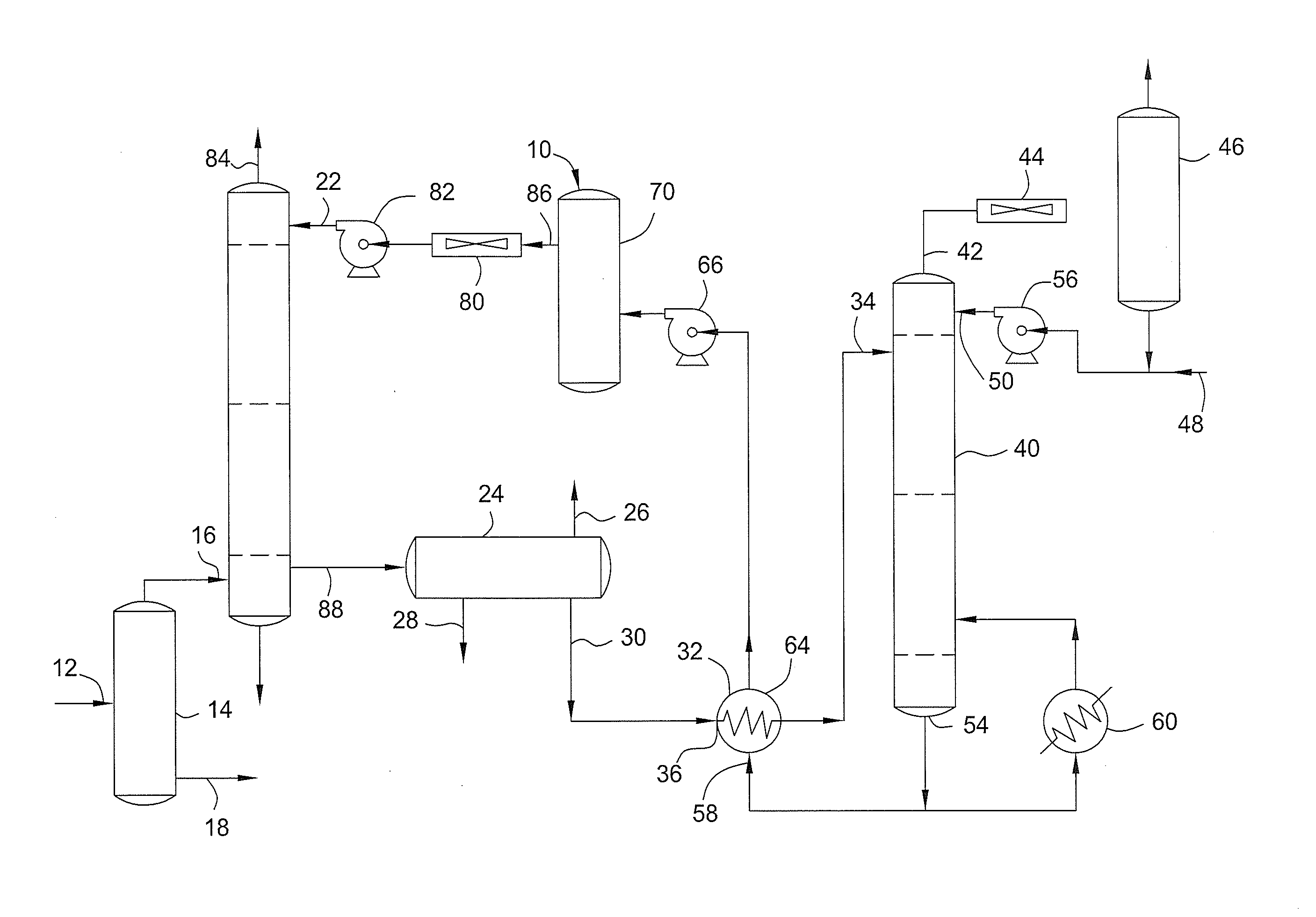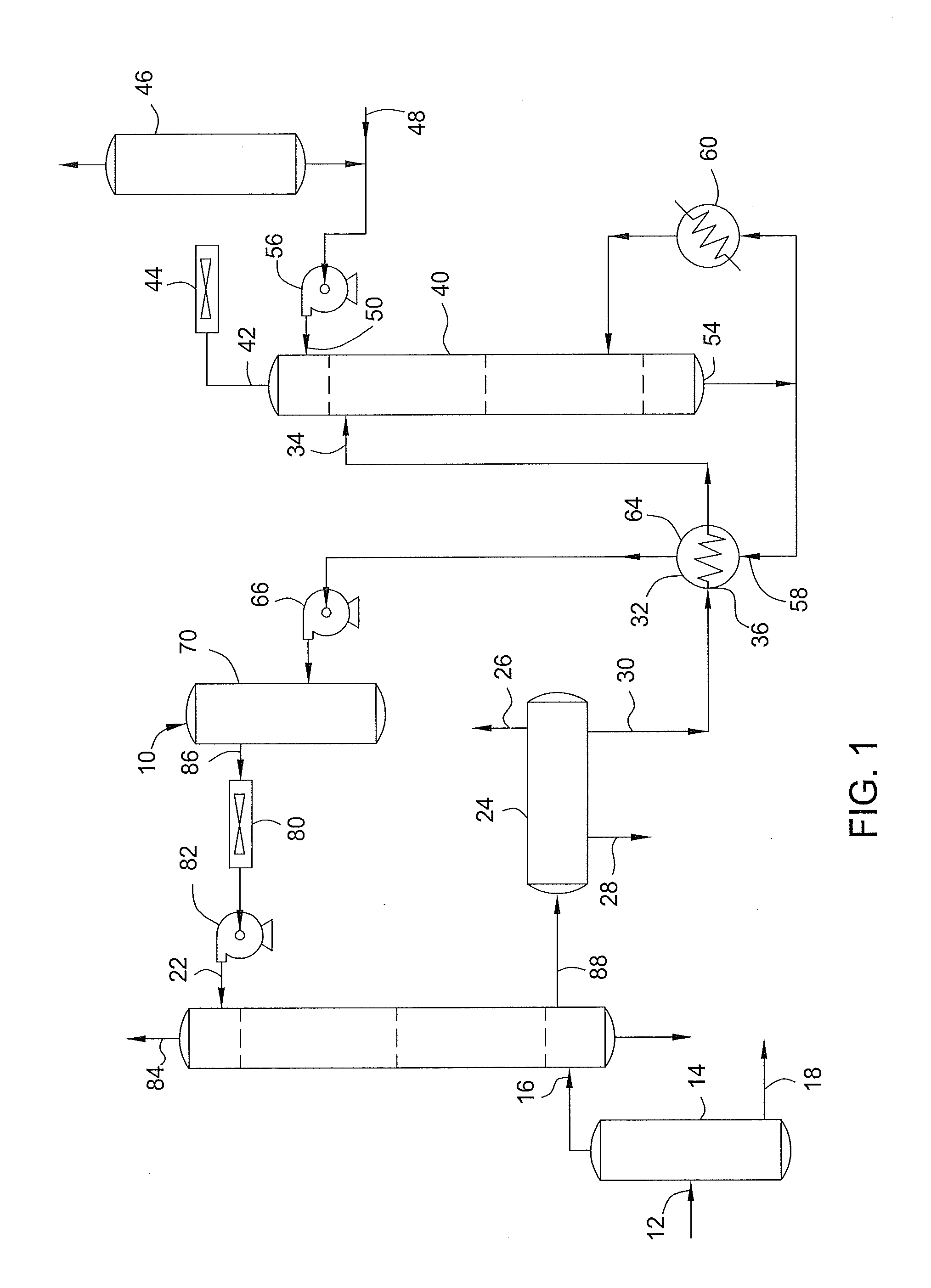Method to decrease decomposition products in solutions that absorb acidic gases such as carbon dioxide and the like in the presence of oxygen
- Summary
- Abstract
- Description
- Claims
- Application Information
AI Technical Summary
Benefits of technology
Problems solved by technology
Method used
Image
Examples
examples
[0039]The following non-limiting examples are provided to further illustrate embodiments described herein. The examples, however, are not intended to be all-inclusive and are not intended to limit the scope of the embodiments described herein.
[0040]In the following examples, the presence of amine-derived contaminants was evaluated in test samples containing an amine solvent solution and an amine additive as compared to their presence in control samples without the amine additive. Generally control and test samples were prepared by adding a sample solution (test or control according to the particular example / experiment) to a 1-liter reaction flask equipped with a cold-water condenser, thermometer, and a sparger tube. The reaction flask was heated with a mantel; the sample solution therein was heated to about 90° C. during the course of experiment. A sparger tube was used to bubble a feed stream, air, through each sample solution at a rate of 0.25 liter / min. Deionized water was added ...
examples 1-4
[0043]With reference to Table 1 and Table 2, Example 1 is a control sample and Examples 2-4 are test samples, which illustrate the effectiveness of amine additive a tetraethylenepentamine (TEPA) when added to the amine solvent solution 2-(2-aminoethoxy)ethanol. In Examples 2-4, TEPA was used in 0.2-1.0% weight of the total test sample: the amine solvent solution, which includes water, and amine additive. 2-(2-aminoethoxy)ethanol and TEPA are available from Huntsman, The Woodlands, Tex.
[0044]Referring to Table 1, the control sample, Example 1, changed from clear to amber after one day and to brown after six days. The test samples, Examples 2-4, however, stayed clear for the entire seven day experiment. Thus, as determined by the lack of color change in Examples 2-4, small amounts of TEPA strongly decreases the formation of amine-derived contaminants.
TABLE 1Example #12342-(2-aminoethoxy)ethanol400398.4356392(grams)TEPA (grams)01.64.08.0TEPA,%00.20.51.0Water (grams)400400440400Appearan...
examples 5-7
[0046]With reference to Table 3 and Table 4, Example 5 is a control sample (without an amine additive) and Examples 6 and 7 test samples with the amine additive TEPA added thereto. In Examples 6 and 7, TEPA was added in 0.2% and 1.0% of the total solution respectively. The amine solvent solution tested in these examples was methyldiethanolamine (MDEA), which is available from Huntsman, The Woodlands, Tex.
[0047]Referring to Table 3, discoloration was observed in the control sample on day 2 with dark discoloration on day 6. In contrast, the test sample Example 6 was lightly colored on day 7, whereas test sample Example 7 remained colorless for the duration of the experiment. Thus, again, as compared to the control sample, test samples had little or no discoloration, which indicates that the amine additive decreased or prevented amine-derived contaminants from forming.
TABLE 3Example #567MDEA (grams)400398.4352TEPA (grams)01.68.0TEPA, %00.21.0Water (grams)400400440AppearanceStartClearCl...
PUM
| Property | Measurement | Unit |
|---|---|---|
| Fraction | aaaaa | aaaaa |
| Fraction | aaaaa | aaaaa |
| Fraction | aaaaa | aaaaa |
Abstract
Description
Claims
Application Information
 Login to View More
Login to View More - R&D
- Intellectual Property
- Life Sciences
- Materials
- Tech Scout
- Unparalleled Data Quality
- Higher Quality Content
- 60% Fewer Hallucinations
Browse by: Latest US Patents, China's latest patents, Technical Efficacy Thesaurus, Application Domain, Technology Topic, Popular Technical Reports.
© 2025 PatSnap. All rights reserved.Legal|Privacy policy|Modern Slavery Act Transparency Statement|Sitemap|About US| Contact US: help@patsnap.com


